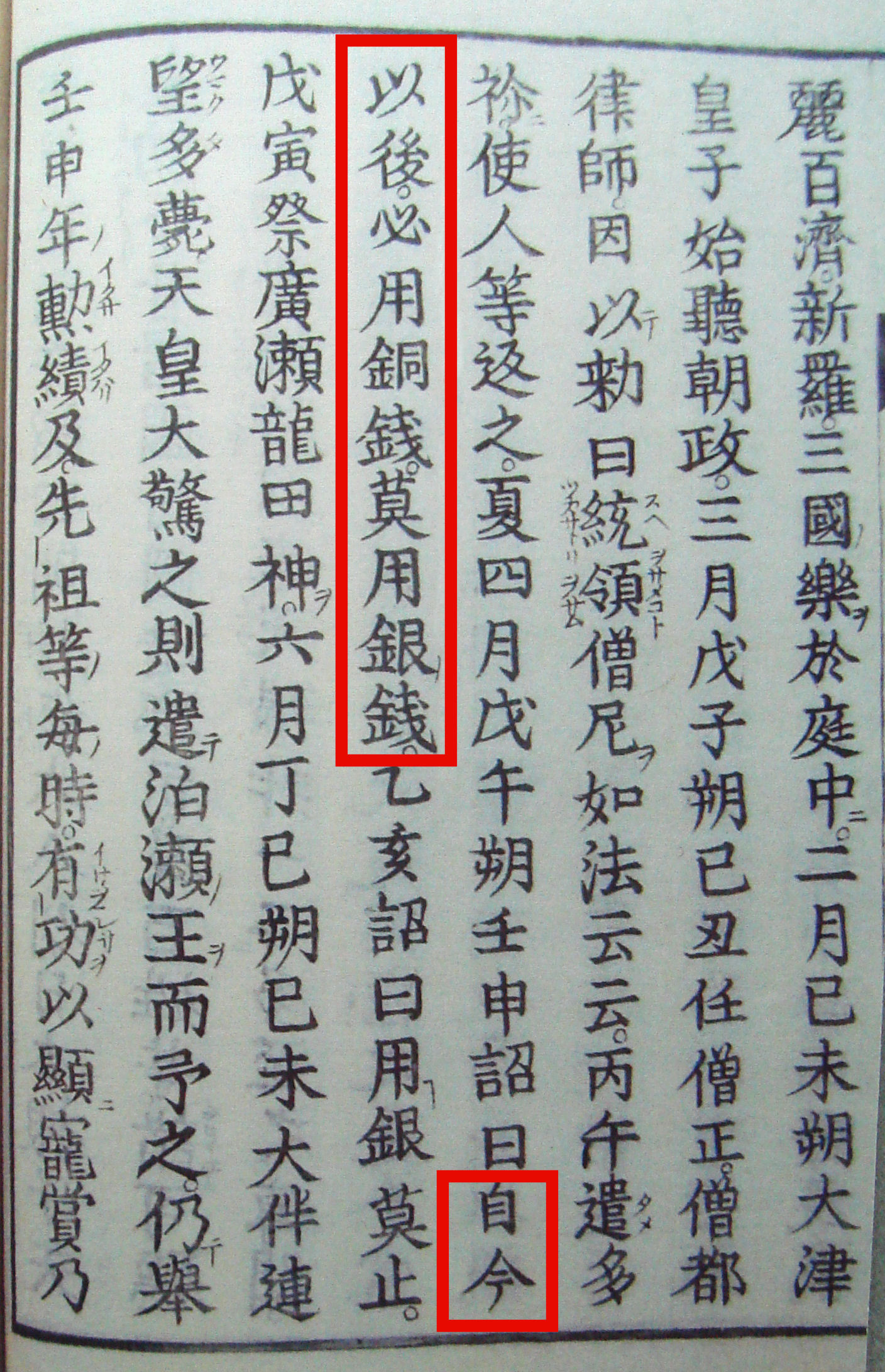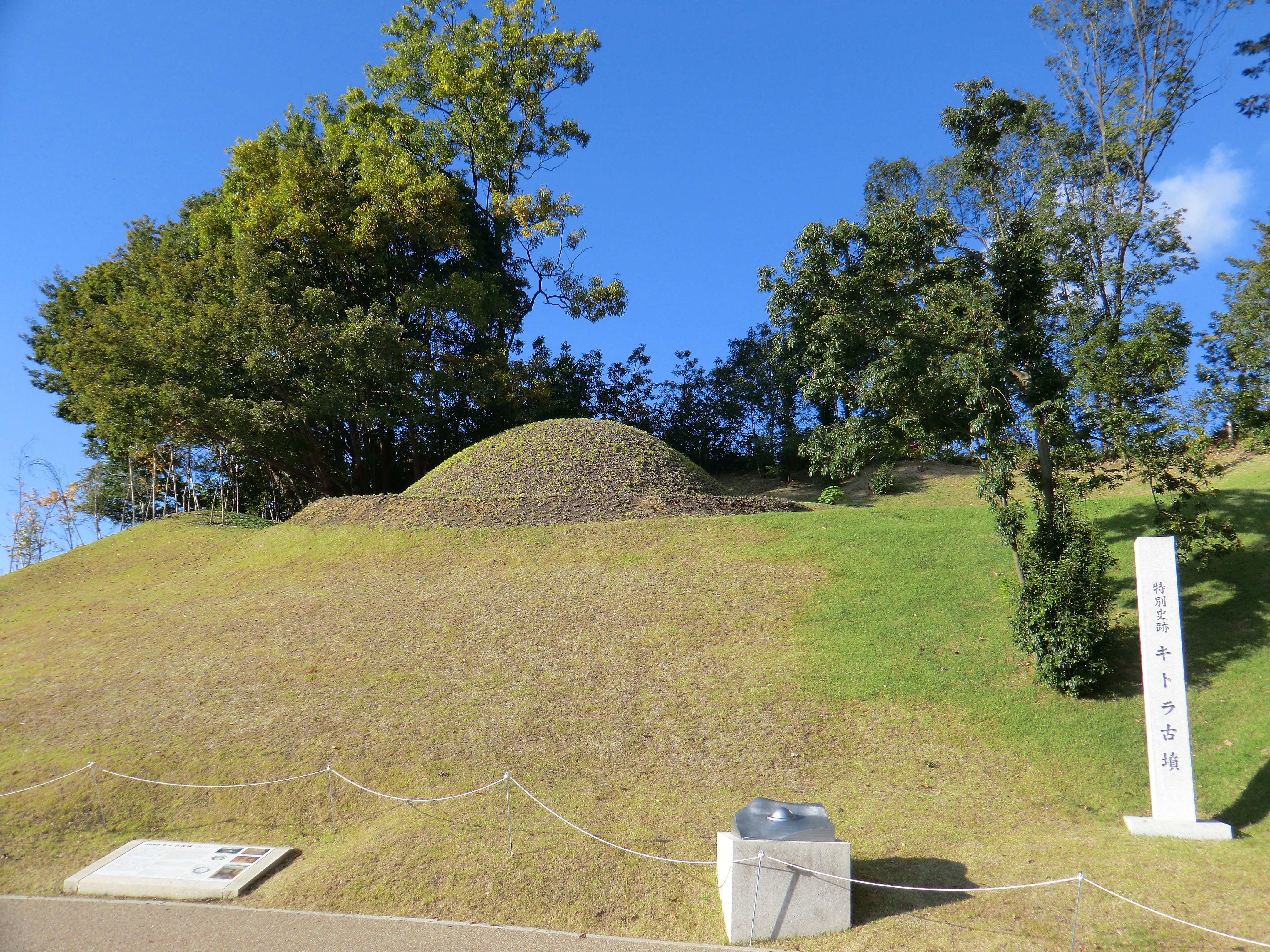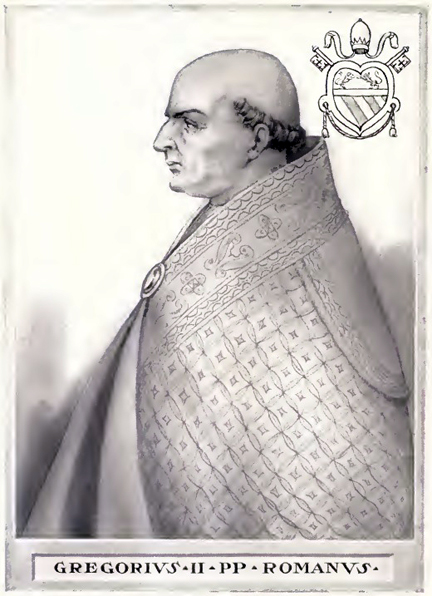|
Prince Naga
Prince Naga (; d. 9 July 715) was a Japanese prince. He was the son of Emperor Tenmu and Princess Ōe, daughter of Emperor Tenji. His full brother was Prince Yuge. Career In the seventh year of Emperor Jito's rule (693) together with his brother Prince Yuge, he was conferred the rank of Kiyohiro 2 (equivalent to Sanhon). He became Nihon through the transition to the court rank system accompanying the enactment of the Taiho Code in 701. Later, from the Monmu Dynasty to the Gen Ming Dynasty, 200 fudo were given in the first year of Keiun (704) and the seventh year of Wado (714). Among the princes of Emperor Tenmu, he had good lineage with his grandfather being Emperor Tenchi, and it was possible that he would be appointed Chidajokanji after Imperial Prince Hozumi, but he was appointed a month before Imperial Prince Hozumi. In the eighth year of the Wado era (715), he died on June 4. Though his age at death is unknown, judging from the timing of the birth of his daughter Prin ... [...More Info...] [...Related Items...] OR: [Wikipedia] [Google] [Baidu] |
Emperor Tenmu
was the 40th Emperor of Japan,Imperial Household Agency (''Kunaichō'') 天武天皇 (40) retrieved 2013-8-22. according to the traditional order of succession. Ponsonby-Fane, Richard. (1959). ''The Imperial House of Japan'', p. 53. He ascended to the throne following the Jinshin War, during which his army defeated that of Emperor Kōbun. Tenmu reigned from 673 until his death in 686, amid Hakuhō period or the late Asuka period. During his reign, Tenmu implemented political and military reforms, consolidating imperial power and centralizing governance. His foreign policy favored the Korean kingdom of Silla while severing diplomatic relations with the Tang dynasty of China. He used religious structures to bolster the imperial authority, building several Buddhist temples including Yakushi-ji and monasteries as well as strengthening ties with the Ise Shrine. He was succeeded by his wife, Empress Jitō. Tenmu is the first monarch of Japan contemporaneously documented as us ... [...More Info...] [...Related Items...] OR: [Wikipedia] [Google] [Baidu] |
Princess Ōe
(died 699) was a Japanese princess who lived during the Asuka period. She was a daughter of Emperor Tenji. Her mother was Lady Shikobuko (色夫古娘), daughter of Oshiumi no Miyakko Otatsu (忍海造小竜). Ōe's siblings included Prince Kawashima and Princess Izumi. Ōe married Emperor Tenmu and gave birth to two sons: Prince Naga Prince Naga (; d. 9 July 715) was a Japanese prince. He was the son of Emperor Tenmu and Princess Ōe, daughter of Emperor Tenji. His full brother was Prince Yuge. Career In the seventh year of Emperor Jito's rule (693) together with his ... and Prince Yuge. After Emperor Tenmu's death, they were qualified to become the next Emperor, but neither did. References {{DEFAULTSORT:Oe 699 deaths Year of birth unknown Emperor Tenmu 7th-century Japanese women Emperor Tenji Daughters of Japanese emperors ... [...More Info...] [...Related Items...] OR: [Wikipedia] [Google] [Baidu] |
Emperor Tenji
, known first as and later as until his accession, was the 38th emperor of Japan who reigned from 668 to 671. He was the son of Emperor Jomei and Empress Kōgyoku (Empress Saimei), and his children included Empress Jitō, Empress Genmei, and Emperor Kōbun. In 645, Tenji and Fujiwara no Kamatari defeated Soga no Emishi and Iruka. He established a new government and carried out political reforms. He then assumed real political power as the crown prince of both the Kōtoku and Saimei Emperors. Despite the death of Emperor Saimei, he did not accede to the throne for seven years, and came to the throne after the relocation of the capital to Ōmi in 668. He created Japan's first family register, the ''Kōgo Nenjaku'', and the first code of law, the Ōmi Code. Traditional narrative He was the son of Emperor Jomei, but was preceded as ruler by his mother Empress Saimei. Prior to his accession, he was known as . Events of Tenji's life As prince, Naka no Ōe played a cru ... [...More Info...] [...Related Items...] OR: [Wikipedia] [Google] [Baidu] |
Sibling
A sibling is a relative that shares at least one parent with the other person. A male sibling is a brother, and a female sibling is a sister. A person with no siblings is an only child. While some circumstances can cause siblings to be raised separately (such as foster care or adoption), most societies have siblings grow up together. This causes the development of strong emotional bonds, with siblinghood considered a unique type of relationship. The emotional bond between siblings is often complicated and is influenced by factors such as parental treatment, birth order, personality, and personal experiences outside the family. Medically, a full-sibling is a first-degree relative and a half-sibling is a second-degree relative as they are related by 50% and 25%, respectively. Definitions The word ''sibling'' was reintroduced in 1903 in an article in '' Biometrika'', as a translation for the German ''Geschwister'', having not been used since Middle English, specifically 142 ... [...More Info...] [...Related Items...] OR: [Wikipedia] [Google] [Baidu] |
Prince Yuge
Prince Yuge (, d. August 21, 699) was a Japanese prince and '' waka'' poet. He was the sixth son of Emperor Tenmu, by Princess Ōe, daughter of Emperor Tenji. His full brother was Prince Naga. ''Man'yōshū'' poems 111, 119, 120, 121, 122, 242, 1467 and 1608 are attributed to him. He died on the twenty-first day of the seventh month of the third year of Emperor Monmu's reign (August 21, 699). He is one of the candidates for the Takamatsuzuka Tomb The is an Asuka period burial mound, located in the village of Asuka, Nara in the Kansai region of Japan. The tumulus was designated a National Historic Site of Japan in 1972. History The tumulus was discovered October 1970 when villagers .... References Citations Works cited * * * * * 699 deaths Year of birth uncertain Sons of Japanese emperors {{Japan-royal-stub ... [...More Info...] [...Related Items...] OR: [Wikipedia] [Google] [Baidu] |
Kitora Tomb
The is an ancient tumulus (''kofun'' in Japanese) located in the village of Asuka, Nara Prefecture, Japan. The tomb is believed to have been constructed some time between the 7th and early 8th centuries, but was only discovered in 1983. A small stone chamber, the Kitora Tomb is a little over 1 metre in height and width and about 2.4 metres long, just large enough to bury a single person. The four walls are aligned with the cardinal points of the compass, and respectively feature the Black Divine Tortoise of the North, the Azure Dragon of the East, the Red Phoenix of the South, and the White Tiger of the West. On the ceiling of the chamber, there is also an astronomical chart that has been the focus of much research and debate by scholars in the field of archaeoastronomy. In addition, the 12 zodiac animal-headed figures with human bodies are painted on the wall, which may be one of the oldest remaining zodiac murals in East Asia. Fragments of a lacquered wooden coffin, torn ap ... [...More Info...] [...Related Items...] OR: [Wikipedia] [Google] [Baidu] |
715 Deaths
__NOTOC__ Year 715 ( DCCXV) was a common year starting on Tuesday of the Julian calendar. The denomination 715 for this year has been used since the early medieval period, when the Anno Domini calendar era became the prevalent method in Europe for naming years. Events By place Byzantine Empire * May – Emperor Anastasios II is deposed in an army mutiny, and succeeded by Theodosius III, a tax-collector from the ''theme'' of Opsikion (modern Turkey). After a six-month siege, Theodosius and his troops take Constantinople; Anastasios is forced to abdicate the throne, and retires to a monastery in Thessaloniki (Macedonia). Europe * September 26 – Battle of Compiègne: Ragenfrid, mayor of the palace of Neustria and Burgundy (appointed by King Dagobert III), defeats Theudoald in the first battle of the Frankish civil war, following the death of Pepin II (of Herstal). * Dagobert III dies of an illness and is succeeded by Chilperic II, son of Childeric II, as ... [...More Info...] [...Related Items...] OR: [Wikipedia] [Google] [Baidu] |
Year Of Birth Unknown
A year is a unit of time based on how long it takes the Earth to orbit the Sun. In scientific use, the tropical year (approximately 365 solar days, 5 hours, 48 minutes, 45 seconds) and the sidereal year (about 20 minutes longer) are more exact. The modern calendar year, as reckoned according to the Gregorian calendar, approximates the tropical year by using a system of leap years. The term 'year' is also used to indicate other periods of roughly similar duration, such as the lunar year (a roughly 354-day cycle of twelve of the Moon's phasessee lunar calendar), as well as periods loosely associated with the calendar or astronomical year, such as the seasonal year, the fiscal year, the academic year, etc. Due to the Earth's axial tilt, the course of a year sees the passing of the seasons, marked by changes in weather, the hours of daylight, and, consequently, vegetation and soil fertility. In temperate and subpolar regions around the planet, four seasons ar ... [...More Info...] [...Related Items...] OR: [Wikipedia] [Google] [Baidu] |
Sons Of Japanese Emperors
A son is a male offspring; a boy or a man in relation to his parents. The female counterpart is a daughter. From a biological perspective, a son constitutes a first degree relative. Social issues In pre-industrial societies and some current countries with agriculture-based economies, a higher value was, and still is, assigned to sons rather than daughters, giving males higher social status, because males were physically stronger, and could perform farming tasks more effectively. In China, a one-child policy was in effect until 2015 in order to address rapid population growth. Official birth records showed a rise in the level of male births since the policy was brought into law. This was attributed to a number of factors, including the illegal practice of sex-selective abortion and widespread under-reporting of female births. In patrilineal societies, sons will customarily inherit an estate before daughters. In some cultures, the eldest son has special privileges. For exam ... [...More Info...] [...Related Items...] OR: [Wikipedia] [Google] [Baidu] |
8th-century Japanese People
The 8th century is the period from 701 (represented by the Roman numerals DCCI) through 800 (DCCC) in accordance with the Julian Calendar. In the historiography of Europe the phrase the long 8th century is sometimes used to refer to the period of circa AD 660–820. The coast of North Africa and the Iberian Peninsula quickly came under Islamic Arab domination. The westward expansion of the Umayyad Empire was famously halted at the siege of Constantinople by the Byzantine Empire and the Battle of Tours by the Franks. The tide of Arab conquest came to an end in the middle of the 8th century.Roberts, J., '' History of the World'', Penguin, 1994. In Europe, late in the century, the Vikings, seafaring peoples from Scandinavia, begin raiding the coasts of Europe and the Mediterranean, and go on to found several important kingdoms. In Asia, the Pala Empire is founded in Bengal. The Tang dynasty reaches its pinnacle under Chinese Emperor Xuanzong. The Nara period begins in Jap ... [...More Info...] [...Related Items...] OR: [Wikipedia] [Google] [Baidu] |






